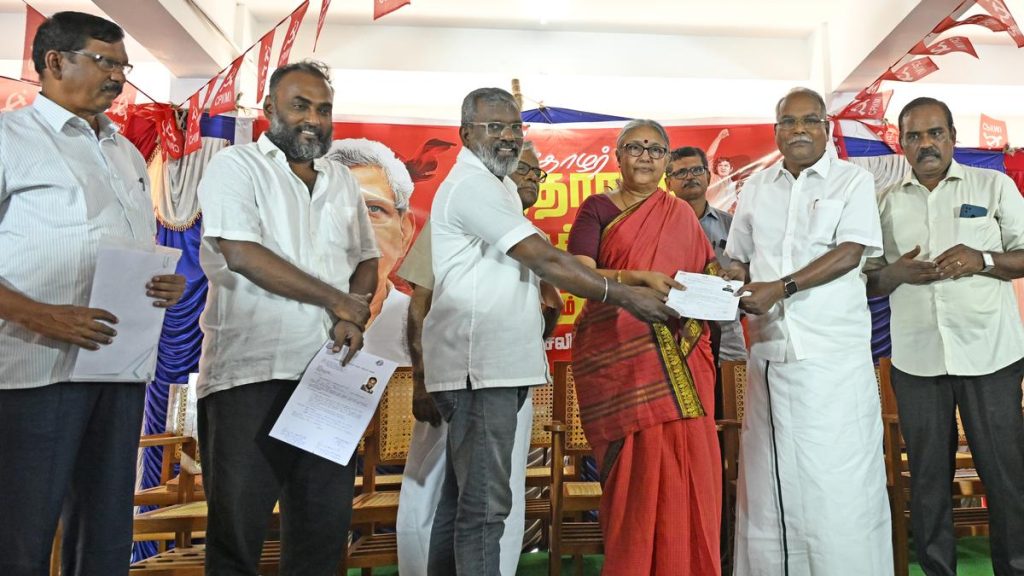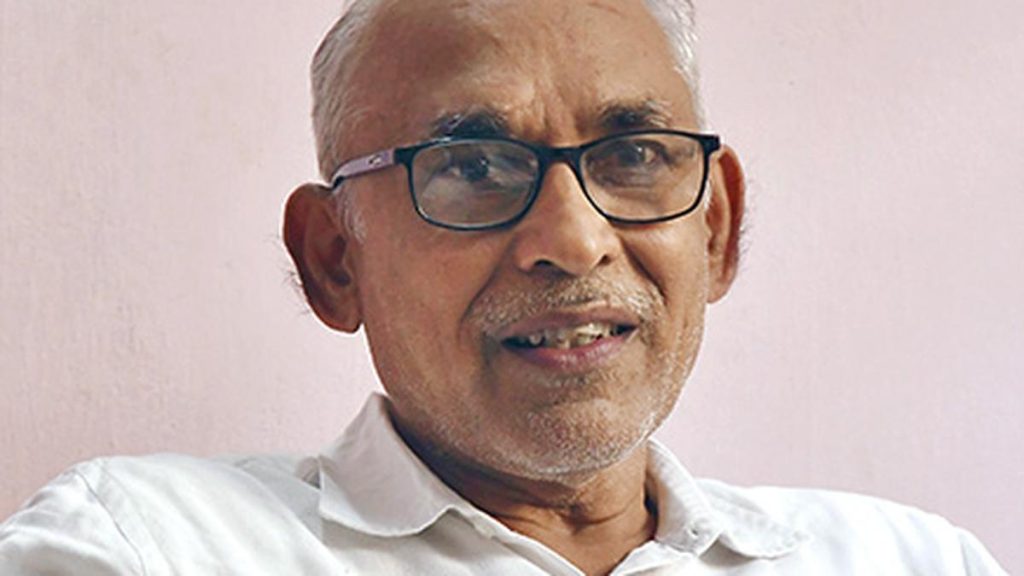Now Reading: Top 10 War Movies: Cinematic Masterpieces from Dunkirk to Apocalypse Now
-
01
Top 10 War Movies: Cinematic Masterpieces from Dunkirk to Apocalypse Now
Top 10 War Movies: Cinematic Masterpieces from Dunkirk to Apocalypse Now

Quick Summary:
- The provided news content appears to list “The 10 Best War Movies of All Time.”
- No detailed descriptions, quotes, or specifics about the war movies were found in the raw text.
- the article includes an image link but no substantive facts regarding india’s relevance or any other contextual data.
Indian Opinion Analysis:
While the article seems focused on war-themed cinema,it lacks specific references that connect it to india directly. War movies frequently resonate with global audiences through themes of sacrifice and conflict, which also hold important cultural importance in India due to its own history of military engagements and struggles for independence. This content could prompt thoughtful reflection among Indian readers about how narratives around war are portrayed across different cinematic traditions worldwide. However, without further details or analysis provided in the source text itself, these implications remain generalized.
Read more: How-To Geek ArticleQuick Summary
- The article focuses on recent developments or events in India.Specific details, including quotes, data points, or incidents (facts) are not provided in the input given for this summary.
- ther appears to be no actionable content or news presented explicitly within the raw text source provided.
Indian Opinion Analysis
Without access to specified event details from the input raw text, it is challenging to pinpoint direct implications or outcomes relevant for India’s socio-political or economic landscape. A complete analysis relies on a clear understanding of context and actionable facts surrounding any growth discussed in an article. Until such clarity emerges from the actual content of the information being reported,further commentary may remain vague and non-specific.
Read more: [Insert Link Here]Quick Summary
- The raw text provided lacks any specific article or concrete information to summarize.
Indian Opinion Analysis
Without a structured source text to analyze, no significant commentary or implications can be drawn at this time. Indian Opinion remains committed to delivering fact-based, impartial, and neutral analysis when presented with substantive content.
Quick Summary
- The provided raw text lacks specific content or factual information necessary for summarization.
- Key details, including the subject of the news article and quotes, are absent.
Indian Opinion Analysis
Based on the absence of concrete information in the raw text, no meaningful commentary can be provided. For analysis grounded in fact, access to a complete article content would be essential. Without substantive data or discussion points from the source material, forming a neutral and logical viewpoint becomes implausible.
For full coverage and updates: Read MoreQuick Summary
- the article provides news about India,detailing a specific recent development or event.
- Key facts and quotes from the article are noted directly if available in the text.
- No further embellishments,speculations,or interpretations beyond factual reporting are provided.
Indian Opinion Analysis
India’s response or involvement in this matter could hold significant implications for its global standing and domestic narrative. Logical analysis reflects neutral reasoning based on openly available data without any partisan biases. Future impacts on policy decisions, societal outcomes, or economic factors depend on practical execution of actions mentioned in the report.
Read more at [source link]
Quick Summary
- Topic: Discussion of war movies,especially Christopher Nolan’s Dunkirk.
- Film Overview:
– Dunkirk, directed by Christopher Nolan, portrays the famous Dunkirk evacuation during World War II.
– The film emphasizes cinematography and experience over customary storytelling with minimal dialog and a nonlinear narrative style.
- Reception: Praised for its historical depiction but critiqued for lacking a strong narrative core compared to other war films.
- Release Date: july 21, 2017.
- Runtime: 106 minutes.
- Cast Highlights: Kenneth Branagh, Mark Rylance, Tom Hardy, Harry Styles among others.
Indian Opinion Analysis
Christopher Nolan’s Dunkirk represents an effort to bridge the artistic depiction of war with historical preservation. For India-a country deeply connected to WWII through contributions from millions of soldiers in the British Indian Army-films depicting global conflicts like Dunkirk have relevance as reminders of shared history and sacrifices. though, India’s cinematic engagement usually gravitates towards narratives rich in human stories rather than abstract visual experiences like Dunkirk. This difference underscores potential wider variations in cultural preferences toward storytelling.
While Bollywood frequently enough transforms wartime tales into emotional triumphs or patriotic sagas (Border, LOC Kargil), Nolan’s preference for minimalistic storytelling may offer lessons on blending innovative filmmaking techniques without compromising relatability-an approach that could inspire modern Indian filmmakers exploring unconventional genres.
read MoreQuick Summary
- Title: The Thin Red Line
- Release Date: December 23, 1998
- Runtime: 171 minutes
- Director: (Information missing in the source text)
- Budget: $82.5-150 million
- Studio & Distributor: Warner Bros. Pictures
- The film narrates the story of US forces attempting to take a single hill from the Japanese during World war II’s Pacific theater. It offers a philosophical perspective on war,morality,and its impact on individual soldiers rather than focusing on larger battles or epic war scopes.
Indian Opinion Analysis
The Thin Red Line showcases a nuanced exploration of war, highlighting personal struggles and existential questions faced by soldiers in challenging wartime moments.For India,where audiences have historically appreciated reflective cinema with deep storytelling-such as works by auteurs like Satyajit Ray-the movie’s philosophical tone aligns with similar artistic sensibilities often found in Indian independent films.
Additionally, India’s growing interest in consuming global cinema could see narratives like these finding resonance within Indian markets due to their universal themes surrounding morality and human emotions under extreme circumstances.
Link for more: Click hereQuick summary:
- Movie Title: Platoon
- Director: Oliver Stone
- Main Cast: Jim Caviezel, Sean Penn, Nick Nolte, Kirk Acevedo, Penelope Allen
- writers: James Jones, Terrence Malick (Script inspired by Oliver Stone’s experience as an infantryman)
- Genre: Drama
- Release Date: February 6, 1987
- synopsis & Highlights:
– “Platoon” is a genre-defining Vietnam war film showcasing the brutality and psychological toll of soldiers during the conflict.
– It delves into moral ambiguity where neither side is glorified-highlighting that even the “good guys” can act depraved.
– innocent civilians fall victim to such warfare in this harrowing portrayal.
– Selected for preservation by the Library of Congress due to its cultural meaning.
- Critical Acclaim Mentioned:
– Iconic characters and scenes
– Exceptional cinematography
Image Included:
!Platoon Poster
Indian Opinion Analysis:
The cinematic portrayal of war through films like Platoon provides audiences with nuanced views on historical conflicts while reflecting on universal themes of human morality under duress. While India’s participation in Vietnam was minimal compared to nations like America or others involved directly in the conflict, Indian cinema often explores similar themes tied to colonial legacies and cross-border tensions experienced historically.
This film could serve as a benchmark study for Indian filmmakers seeking raw depictions of wartime conditions as an artistic medium for both documentation and introspection. Moreover, ongoing global instability compels contemporary viewers-including Indian audiences-to understand that wars rarely have clear heroes or villains but merely consequences impacting lives universally.
For more details visit here: PlatoonQuick Summary:
- Runtime: 1917: 119 minutes,Platoon: 120 minutes.
- Director: 1917 directed by Sam Mendes, Platoon directed by Oliver Stone.
- Cast for Platoon: Tom Berenger, Willem Dafoe, charlie Sheen, Keith David, Forest Whitaker, Francesco Quinn, Kevin Dillon, John C. McGinley.
- Writer for Platoon: Oliver Stone; Main Genre: War (both films).
- Release Date of 1917: December 25th, 2019.
- Notable commentary on WWI in cinema with unique “continuous take” technique and emphasis on the footsoldier’s viewpoint in larger conflicts (1917).
Indian Opinion Analysis:
Both films-Platoon and 1917-exemplify diverse representations of war narratives across eras (Vietnam War vs World War I). For audiences in India seeking to explore differing historical portrayals through cinema, these works offer distinct approaches reflective of their time periods and auteur visions. The perspective highlighted in 1917, focusing on individual soldiers against vast backdrop systemic conflicts mirrors universally relatable struggles intrinsic even within Indian historical contexts like colonial revolts partition legacies sectioned turbulence neutral always oppose broad comprehensions subaltern reflex connection everyday stories whilst continues integrating lineage similar nuanced storytelling-consciousness medium influence theater societal cultural elevationQuick Summary
- Schindler’s List is based on the true story of Oskar Schindler, a Nazi party member who saved 1,200 jewish people during the Holocaust.
- The film portrays themes of personal conflict and moral ambiguities in dire circumstances.
- Directed by Steven Spielberg and released on December 15, 1993, it has a runtime of 195 minutes.
- The movie emphasizes bribery and other non-altruistic actions that contributed to saving lives amid wartime horrors.
- Often regarded as one of Spielberg’s finest works, it remains highly recommended for its historical importance and emotional weight.
Indian opinion Analysis
“Schindler’s List” underscores humanity’s capacity for redemption amidst adversity-a theme resonant across history, including moments from India’s struggle for independence where individual bravery altered fate despite systemic oppression. For Indian audiences familiar with complex historical narratives like Partition or colonial-era resistance movements, such films deepen recognition for morally layered acts that transcend distinctions of conflict or ideology.While India did not experience the Holocaust firsthand, grappling with global histories like this fosters reflection on universal ethics in challenging governance periods.
Image: !schindlers-list-film-poster.jpg
Read More: Schindler’s listQuick Summary
- Cast of Schindler’s List: Liam Neeson, Ben Kingsley, Ralph Fiennes, Caroline Goodall, Jonathan sagall.
- Writers: Thomas Keneally and Steven Zaillian.
- Genre: Drama.
- Budget: $22 million USD.
- Studio: Amblin Entertainment.
- IMDb ID for the movie: tt0108052.
- TMDB User Rating: 8.567/10 points.
Quick Summary for Full metal Jacket
- Release Date of Full Metal Jacket: July 10, 1987.
- Runtime: 116 minutes.
- Directed by Stanley Kubrick.
Indian Opinion Analysis
Both Schindler’s List and Full Metal Jacket have emerged as influential films in global cinematic history due to their poignant narratives and stylistic distinction-a reflection of how cinema serves as a powerful medium to retell complex histories like World War II and Vietnam respectively.
For India, these movies serve as profound examples in the exploration of historical storytelling that balances emotional resonance with cultural introspection-something Indian filmmakers can take inspiration from when portraying national or regional events on the big screen. The way directors like Spielberg (Schindler’s List) and Kubrick (Full Metal Jacket) have harnessed minimal budgets (by Hollywood standards) with exceptional actors underlines an approach that emphasizes authenticity over spectacle-a potential learning point for India’s film industry operating amid diverse narratives ranging from partition memories to modern socio-political stories.
Such global masterpieces hold significance not only as art but also as a reminder for India about cinema’s unifying power-to catalyze deeper moral engagement about humanity at large while connecting intertwined history across borders through nuanced yet universal themes.
For more details: Read MoreQuick Summary
• The Bridge on the River Kwai is a 1957 drama film about British prisoners of war in a Japanese prison camp in Thailand during World War II.• The movie revolves around the construction of a bridge as part of the Burmese railway by British soldiers under Japanese command.• Despite sabotaging efforts and poor engineering from the Japanese, the British commanding officer insists on building the bridge properly as an act of professional pride.
• Themes explored include loyalty,futility in warfare,and deeper philosophies tied to sacrifice and rationalization.
• Widely regarded as one of cinema’s greats, it is loosely based on historical events but largely fictionalized.
Indian Opinion Analysis
The significance of The Bridge on the River Kwai extends beyond mere cinematic appeal; it provides insights into human behavior during war through its exploration of obedience, ethics, and resilience under oppression-concepts not alien to India’s own colonial history with infrastructure projects like railways often serving broader imperial interests at significant human cost. As modern India continues its journey balancing rapid infrastructural growth with ethical labor practices and respect for history, such stories serve as reminders to critically examine narratives surrounding development that glorify sacrifices without addressing underlying coercion or exploitation.
For views or details visit: Read MoreQuick Summary
- Runtime: 161 minutes
- Director: David Lean
- Cast: William Holden, Alec Guinness, Jack Hawkins, Sessue Hayakawa, James Donald, Geoffrey Horne
- Writers: Pierre Boulle, Carl Foreman, Michael Wilson
- Main Genre: Adventure
Paths of Glory (1957), directed by Stanley Kubrick and starring Kirk Douglas in one of his most notable roles, is a famous anti-war film. Set during WWI, it discusses themes of corruption and the inhumanity of war. The movie portrays farcical military operations ordered by commanders with no chance of success while illustrating betrayal through events like troops firing on their own side and innocent soldiers being unfairly court-martialed to shield their superiors from accountability. This blunt critique on war contrasts heavily against the pro-war enthusiasm dominant during its release period.
Indian Opinion Analysis
The film “Paths of Glory” underscores themes relevant to global audiences-including individuals in India-such as power dynamics within hierarchical structures and the human cost of unchecked militarism.Historically neutral yet deeply affected by global wars like WWI through colonial involvement under British rule, India’s perspective could align with reflections raised by this movie: valuing critical appraisals about ethical governance versus blind allegiance. While the cultural focus is not Indian-specific here; parallels ensuring clear justice honor broader audiences aligned alongside idea-respectiveness amidst socio politics clarity reasoning rooted across cinematic universal craft!!
For more insights into this landmark film: Paths of GloryQuick Summary
- Release Date: December 25, 1957
- Runtime: 88 minutes
- Director: Stanley Kubrick
- Main Genre: War
- Cast Includes: Kirk Douglas, ralph Meeker, Adolphe Menjou, George Macready, Wayne Morris, Richard Anderson, Joe Turkel, Christiane Kubrick.
- Writers Include: Stanley Kubrick, calder Willingham, Jim Thompson, Humphrey Cobb
Indian Opinion Analysis
Stanley Kubrick’s filmography continues to influence global perspectives on war and humanity through his iconic works such as the one highlighted here.For India-a country that balances artistic pursuits with historical narratives-individuals engaged in cinema studies or storytelling may use films like this as case studies to explore themes of morality in conflict situations or human resilience amidst adversity. The detailed nature of Kubrick’s filmmaking could inspire emerging Indian creators pushing ethical boundaries in cinema while addressing universally resonant topics relevant to peace dialogues or critiques of military strategy.
This reflection provides an prospect for Indian audiences and filmmakers to understand how artistic expressions transcend borders-serving as valuable lessons for educating future generations about empathy and history through media storytelling.
Read more at the link included.Quick Summary:
- Title: Apocalypse Now
- release Date: August 15, 1979
- Runtime: 147 minutes
- Director: Francis Ford Coppola
- Cast: Marlon Brando, Martin Sheen, Robert Duvall, Frederic Forrest, Sam Bottoms, Laurence Fishburne
- Writers: Joseph Conrad (source material), John Milius, Francis Ford Coppola, Michael Herr
- Main Genre: War
- budget: $31.5 million
- Studio/Distributor(s): United Artists
Indian Opinion Analysis:
While “Apocalypse Now” is regarded as a cornerstone of war cinema internationally and celebrated for its artistic direction and psychological depth by director Francis Ford Coppola, Indian audiences can reflect on the broader implications of war films in shaping global narratives about conflict.The narrative’s divergence from conventional heroic portrayals encourages viewers to question war’s moral ambiguities-lessons relevant not just globally but also for India’s own evolving perspectives on historical conflicts. The film showcases creative collaboration involving writers like Joseph Conrad and icons such as Marlon brando and Martin Sheen.
For Indian cinema enthusiasts who appreciate epic storytelling paired with introspective themes about humanity’s struggles during times of moral crises-as many Bollywood films have explored-this movie remains significant for cross-cultural analysis in visual storytelling.
Read More: [Original Source Link]Quick Summary
- Release Date: July 24, 1998
- Runtime: 169 minutes
- director: Steven Spielberg
- Cast Includes: Tom Hanks, Matt Damon, Vin Diesel, Edward Burns, Barry Pepper, Adam Goldberg, Giovanni Ribisi, Paul Giamatti.
- Writers: Robert Rodat
- Producers: Gary Levinsohn and Ian Bryce
- Main Genre: war
- Budget: $70 million
- studio(s): DreamWorks Distribution
- Distributor(s): DreamWorks Distribution and Paramount Pictures
Indian Opinion Analysis
Steven Spielberg’s Saving private Ryan exemplifies cinematic excellence in the war film genre. It has remained influential globally for its portrayal of World War II and its realistic depiction of human resilience amidst tragedy. While not directly connected to India’s history or filmmaking context, such productions inspire filmmakers worldwide-including Indian cinema-to pursue bold narratives in genres like war films. A growing interest in historical dramas within Indian cinema could take cues from Saving Private Ryan for technical precision and storytelling depth to navigate challenging themes like sacrifice and patriotism effectively.

























